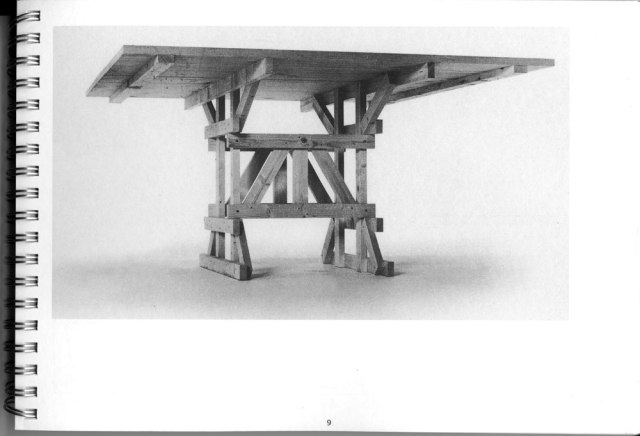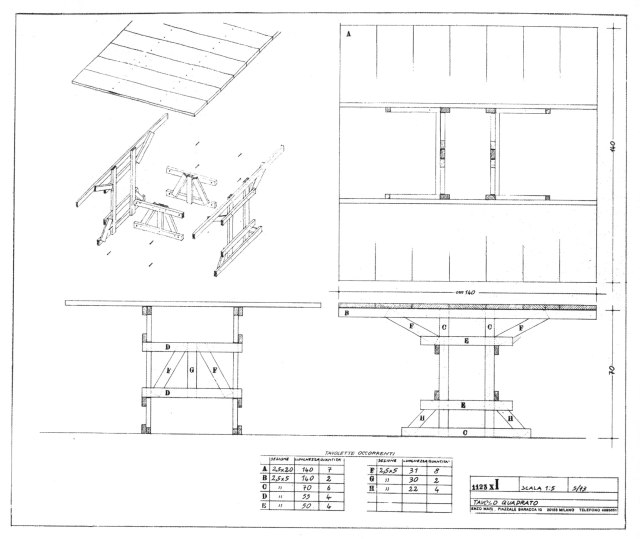
When you think of people who have poked the furniture manufacturing establishment, Enzo Mari should be near the top of the list. His 1974 “autoprogettazione?” exhibit, plans and book proposed that ordinary people could make their own furniture using dimensional lumber, a crosscut saw and a hammer.
No ripping. No angle cuts other than 90°. No joinery other than nails.
Mari, a noted furniture designer, offered his plans for tables, chairs, beds and shelves free to anyone who asked for them. They were later compiled into a book, “autoprogettazione?” (Edizioni Corraini, 2002), you can now buy.
A couple friends who are familiar with Mari have asked if “The Anarchist’s Design Book” was inspired by Mari’s important book. The answer is: Not really. “autoprogettazione?” is, by Mari’s admission, almost entirely about the process and not the result.
When the book was released, lots of people built the designs to save money, to “get back to nature” or finish out a cottage in a rustic style. Mari says that those people missed his point.
“Obviously (my) proposal was only intended as a practical critical exercise,” Mari writes. “Obviously objects have to be produced using machinery and the most advanced technology and only in this way is it possible to have items that are good quality and economical.”
So what was his point? Mari was trying to engage the everyday person in an exercise that would show them how things are designed and “to teach anyone to look at present production with a critical eye.”

After completing “The Anarchist’s Design Book,” I took a fresh look at “autoprogettazione?” And I also started reading a few novels like drinking from a firehose. (I try to avoid others’ writing while I’m writing for a variety of complex and stupid reasons.)
Some of Mari’s designs are actually quite successful, particularly the tables, shelves and armoire. I’m not wild about the chairs or beds, however. They do not shake off their pallet DNA enough to inspire me to pick up the tools.
And in the end, I think the act and the result are of equal importance, not only for myself but for the future of our material culture.
— Christopher Schwarz